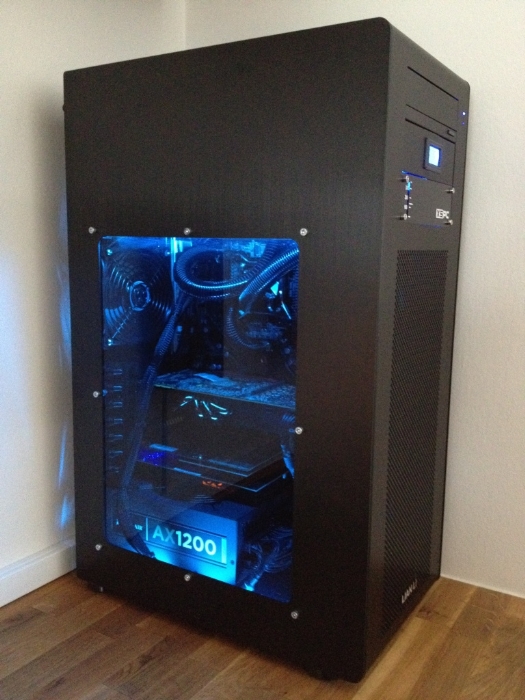Test: Intel P35 chipset
Bundkort, Intel d. 21. maj. 2007, skrevet af Klavs S 11 Kommentarer. Vist: 8386 gange.
Korrekturlæser:
Billed behandling:
Oversættelse:
Pristjek på http://www.pricerunner.dk
Produkt udlånt af: Intel
DK distributør: Intel
Billed behandling:
Oversættelse:
Pristjek på http://www.pricerunner.dk
Produkt udlånt af: Intel
DK distributør: Intel
#1
Fed artikel.. Skal have mig sådan et board :) OC-udsigterne for det chipsæt ser vilde ud...
Shake
Shake
#2
Har på fornemmelsen dette er en kort mellemfase inden det næste udkommer for fuld kraft!
Lidt ligesom Core Duo inden Core2Duo udkom :)
Lidt ligesom Core Duo inden Core2Duo udkom :)
#3
Det bliver spændende at se hvad man kan hive ud af et P5k Dlx, har bestilt 😀
#4
Jeg har tidligere læst, at P35 og hele Bearlak-generationen ikke understøtter CPU'er ældre end Core 2 Duo - holder det stadig?
#5
3# det kører ganske ok , har sådan et og kører 510x7 på en E6700 🙂
http://www.shg.dk/link.asp?got... shg bundler med 2 GB DDR3 ram 😀
#7
#4
MSI og ASUS skriver i deres materiale at Pentium D er understøttet, men der står intet om det i Intel's papirer. Andre, som har hørt det samme som #4?
MSI og ASUS skriver i deres materiale at Pentium D er understøttet, men der står intet om det i Intel's papirer. Andre, som har hørt det samme som #4?
#8
Mangler bare en ekstra PCIE x 16 til SLi setup, træt af 680i SLi 😩
PRJ
PRJ
#10
Ja, jeg venter helt sikkert længe endnu med at skifte. I forhold til prisen er der temmelig sikkert minimalt at hente i forhold til DDR2/P965.
Vi kan se i 2008.... 🙂
Vi kan se i 2008.... 🙂
#11
#4+7+9 - officielt siger intel nej, men når både Asus og MSI skriver at de gør, så ville jeg vælge at tro på dem...
Men jeg har ikke kunne opdrive nogen der faktisk har puttet en Netburst cpu i et P35 bundkort endnu.... Står ellers selv og vil gerne opgradere så jeg er klar til 45nm cpuerne (Conroe på steorider 😲)
Men jeg har ikke kunne opdrive nogen der faktisk har puttet en Netburst cpu i et P35 bundkort endnu.... Står ellers selv og vil gerne opgradere så jeg er klar til 45nm cpuerne (Conroe på steorider 😲)





